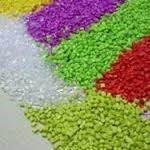Applications
The range of applications of polypropylene (PP), is very wide. Some of the most important of them has been mentioned below:
Flexible Packaging
PP is one of the leading materials used for film extrusion and has in recent years benefited versus cellophane, metals and paper on account of its superior puncture resistance, low sealing threshold and competitive price.
Rigid Packaging
Rigid packaging subdivides into a multitude of packaging applications from caps and closures to pallets and crates. Caps and closures manufactured from PP have benefited from growth in the PET bottle market, particularly for mineral water containment and that of edible oil.
Automotive
Polypropylene has a large application in automotive industry. Especially in battery cases PP is dominating for the last 25 years.
Fibers and Fabrics
A large volume of PP utilized in the market segment known as fibers and fabrics. PP fiber is utilized in a host of applications including tape, strapping, bulk continuous filament, staple fibers.
Medical
Medical vials, diagnostic devices, petri dishes, intravenous bottles, specimen bottles, food trays, pans, and amber-colored small containers that hold pills and capsules are also of PP products.
Industrial
In industrial sector polypropylene is used to manufacture a range of sheet, pipe and Returnable Transport Packaging (RTP).
Automotive
Medical devices
Fabric
Packaging
Properties
This product is antibacterial polypropylene granola containing silver nanoparticles with a particle size distribution under 20 nm. Silver concentration is 145 ppm in the product.
In nano-dimension, antibacterial effect of silver increases significantly, so that they are able to destroy over 650 bacterial species. It is reported that these nanoparticles have significant antifungal activities against some ringworms. Ag nanoparticles interact with sulfur and phosphorus compounds of membrane proteins affecting cell morphology and structure, causing its death.
Anti-bacterial Activity
